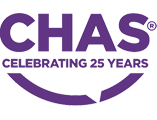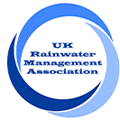Why is widespread use of rainwater harvesting needed
24/10/2023

24/10/2023
Storm Babet has caused significant flooding in most areas of the country over the past couple of days. Severe weather events like Storm Babet are predicted to become more frequent due to the impacts of climate change. Not only did the storm cause flooding for a large number of domestic and commercial properties, but it also highlighted our vulnerability to extreme weather in the UK, especially heavy rainfall. Road. Rainwater harvesting is one of the sustainable drainage methods this country can use to become more flood-resilient. This blog will help you to understand why widespread use of rainwater harvesting is no longer a ‘nice to have’, but a must.
Rainwater harvesting can address two fundamental issues with the water sector at the moment; these being flood resilience and water scarcity. Both issues are equally as important to address as the impacts of not addressing them effectively will be far more costly in the long-term.
Understanding why flooding is such a problem in the UK during heavy rainfall requires consideration of our drainage infrastructure. Much of our sewer network was constructed in Victorian times which is a problem for a rapidly growing population. UK sewers are commonly known as ‘combined sewers’ because they process both foul wastewater from toilets and stormwater. Together, these two types of wastewater get transported many miles away for treatment. In an ideal world, these sewers would be separated into stormwater drains and foul water sewage networks; however, the cost of this and the disruption it would cause to many lives is the very reason why the separation has not occurred yet and likely never will for the whole UK drainage network.
During heavy rainfall, combined sewers can become overwhelmed with the sheer volume of stormwater in the network. When the network becomes overwhelmed, flooding can occur, or a combined sewer overflow is required. Combined sewer overflows release excess untreated wastewater into rivers and seas.
It is important to remember that stormwater is relatively clean compared to foul wastewater from toilet flushing and other activities; therefore, does not need to be processed in the same way as foul wastewater.
Rainwater harvesting collects rainfall from the roof area of a building for reuse. The process of rainwater harvesting involves a main storage tank which is sized to meet the requirements of the building. Managing the rainwater locally means that the rainwater does not enter the combined sewer network. If every non-household property used rainwater harvesting, it would result in a significant reduction of stormwater within the combined sewer network.
Rainwater harvesting can even be linked with the on-site attenuation storage capacity to decrease the volume of stormwater in the combined sewer network further. A traditional attenuation system holds stormwater locally on-site and slowly releases it into the network. A combined rainwater harvesting and attenuation system holds the stormwater from the roof area and re-uses the rainwater as a sustainable water supply within the building. This is done via Active Attenuation Weather Predication. Learn more here.
In the UK, there is a misconception that the country receives high levels of rainfall; therefore, water is plentiful. This is simply not the case. Collectively, water companies have predicted that an additional 4 billion litres of additional water will be needed per day by 2050. Areas of the Southeast are suffering the highest levels of water scarcity because the climate is drier and there is a highly dense population impacting demand. For businesses, water companies have no legal obligation to provide a water supply; therefore, it is in all businesses’ best interests to use water responsibly so that they are never faced with no water supply or planning restrictions on building extensions.
Many developers are taking the route of installing water-efficient ‘fittings’ within their newly constructed properties. Dual flush toilets and low-flow showers are typically removed over time due to a lack of understanding about their purpose. Likewise, water butts only reduce water demand for external garden purposes rather than preventing drinking water from being wasted for toilet flushing. Changing the behavior around water consumption is hard; therefore, mitigating the need for behavior change is needed to overcome water scarcity.
Rainwater harvesting utilizes rainwater collected from the area of a building to provide a sustainable water supply which can be used for non-potable outlets. Rainwater is clean, safe, and sustainable. Rainwater is naturally clear when it falls meaning little filtration is required to make the rainwater fit for reuse as a non-potable supply.
Without a rainwater harvesting system installed, mains water which is treated to drinking water standards is wasted for uses that do not involve consumption of the water.
There are many types of rainwater harvesting systems available. Stormsaver can recommend the best type of system based on roof area, demand, and local weather data calculations. See our rainwater harvesting systems here or contact our team to find out more.

My role as a Water Reuse Specialist means I get to keep up to date with all things water conservation. My favourite water saving tip is to turn taps off when brushing your teeth! I think rainwater harvesting and the water reuse industry is exciting, and I love sharing updates with our customers. View Matt’s Stormsaver profile here.
Terms & Privacy Policy Cookie Policy Site Map
Copyright © 2024 Stormsaver Ltd. All Rights Reserved.





